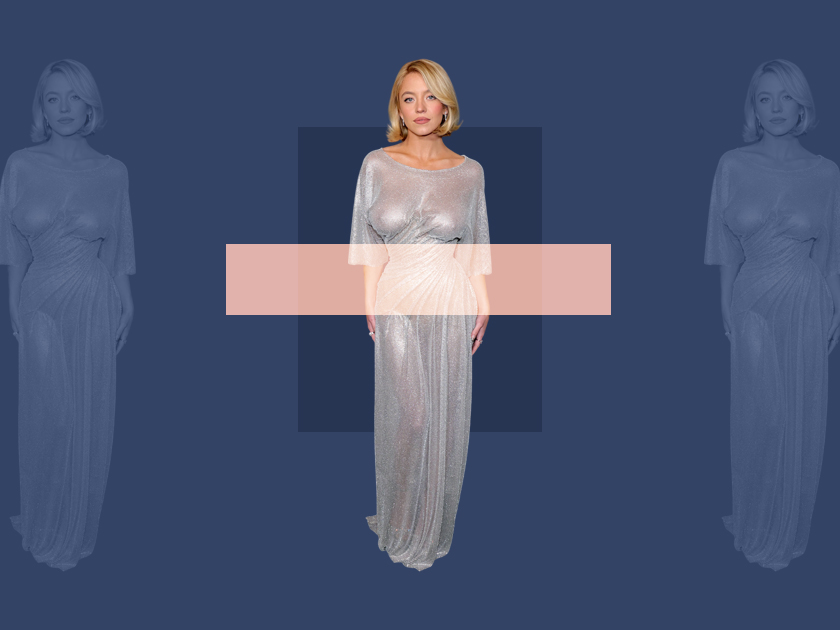Since 1993, the association for the fight against HIV/AIDS, AIDES, has organized the Grande Braderie de la mode, which raises funds to carry out concrete actions. On the occasion of the next edition in June 2023, which will be on sale at the BETC General Stores in Pantin (from 8 to 11 June) and at the Docks Village in Marseille (from 22 to 25 June)clothing from large and small brands, at reduced prices, we wanted to know more about the why and how of such a solidarity initiative.
” Today we have all the tools needed to end the epidemic, but we lack the means “, explains Élodie Lambourde, director of communication and collection of AIDES, who returns for to miss about how this project came about, what it funds, the designers that can be found there, and other ways to fight.
Interview with Élodie Lambourde on the occasion of the 30th anniversary of La Grande Braderie de la Mode
To miss. How did the idea of creating a Big Fashion Sale to raise funds for the fight against HIV/AIDS come about?
Elodie Lambourde. The idea of creating a Grande Braderie de la Mode arose in collaboration with the magazine Marie-Claire. The initial project was to finance a reception center for people affected by HIV. The first Braderie was therefore born in 1993. The fashion industry having been strongly affected by HIV/AIDS in the 90s, it seemed obvious to make a common project and this is how the Braderie was born. The support of the communication agency BETC for almost 20 years has helped to strengthen communication around the Braderie and to develop the sales area. He’s a great support to our cause.
Why does the fashion industry have a special role to play in the fight against HIV/AIDS, even today?
Historically, the fashion industry has been hard hit by HIV/AIDS at the start of the epidemic. Many of its young creators and models died of AIDS, in shame and silence, for fear of scandal. Among these, as the American journalist Phillip Picardi reminds us in an investigation for vogue in 2021, young black and gay designers like Willi Smith, the godfather of streetwear, Patrick Kelly, the first American fashion designer to be accepted into the Chambre Syndicale du Prêt-à-porter or Perry Ellis, the mentor of Marc Jacobs.
From the point of view of communication, we believe that fashion, be it luxury or prêt-à-porter, speaks to everyone. It’s a good way to attract the general public to our topics in a more positive way than the seemingly anxious prevention campaigns that emerged in the 2000s. We find this “positive” communication bias in our annual #fetelamour event, which this he year will take the form of a stand-up show on June 20 at the Théâtre des Variétés.
In 30 years, is it less and less difficult to convince brands to participate in the Great Fashion Sales? What interests do you find there?
The situation has changed since the 90s. Brands are increasingly solicited by associative projects, which presents us with a real loyalty problem. But we also see that brands, like consumers, want to participate in a more circular and inclusive economy. La Grande Braderie responds to this need by selling major brands at reduced prices of items whose profits finance the fight against AIDS.
Who do you think are the most prominent stylists of the moment that we find for this June 2023 edition of the Grande Braderie de la mode?
We find for this edition the essentials that have sustained us for a long time: Isabel Marant, Claudie Pierlot, Maje, Agnes B, Jerome Dreyfuss, Christian Louboutin and Chloé. The 30th anniversary of the Grande Braderie will also be an opportunity to rediscover big brands that joined us a few years ago, such as Tajine Banane, Hod Paris, Frnch or Zyga.
Are there similar fashion selections at Pantin (June 8-11) and Marseille (June 22-25)? Also, how is the distribution between Île-de-France and the south?
The majority of donations are centralized in Paris and we donate 20% of the items collected at the Marseille sale. For its part, Marseille is also supported by local brands. In terms of sponsorship, that of Pantin changes at each edition, while in Marseille, Jocelyn Meire (founder of FASK – textile clothing school) has been sponsoring the sale for a few years.
How do you choose the godfather or godmother for each edition of La Grande Braderie de la Mode?
We choose a personality sensitive to our cause and willing to highlight the fight against AIDS through our solidarity shopping event. This year it is a very faithful personality: Daphné Bürki who was already godmother of our event in 2010. In addition to being a personality recognized for her very strong tastes in fashion, Daphné is very committed and supports our cause as soon as the his busy schedule will allow.
How much does each Grande Braderie de la Mode earn and what does it actually finance?
Each edition of the Grande Braderie raises an average of 200,000 eurosequivalent to the cost of one million condoms or 35,000 HIV rapid test kits.
Compared to your other fundraising methods, fashion has to present a real logistical challenge, so why choose such a challenge? Is the game still worth the candle?
The Grande Braderie de la Mode is celebrating its 30th anniversary this year. In this period of time, we have managed to set up an efficient operation thanks to the involvement of our activists and volunteers, essential for the day-to-day management of the logistics. La Grande Braderie is complementary to our other collection systems, it allows us to reach a very large audience thanks to the diversity of products available in which everyone can find satisfaction. A total of €9 million has been raised over 30 years for the fight against AIDS in Île-de-France and PACA (Provence-Alpes-Côte d’Azur), the regions most affected in France by the HIV/AIDS epidemic .
After the confinements, with the Covid pandemic persisting, but also inflation affecting the budget of the French men and women, do you fear a decline in the mobilization for the Grande Braderie de la Mode?
Support for the brand continues despite a tense context, loyalty is there, even if second-hand platforms are real competition for us, which generate a drop in donation volumes.
The customer mobilization around the sale is growing, because the sale offers the possibility of accessing quality pieces at low prices, so with the economic context, it is a real opportunity for customers. . Many tell us to wait for the liquidation to be able to have fun!
What would you say to people who find that offering first-hand clothes has too negative an impact on the planet and that the fight against HIV/AIDS shouldn’t be done at the expense of ecological struggles?
Solidarity sales also plays a role in the circular economy by mainly offering end-of-stocks of participating brands. More and more brands that join us have an ecological commitment in the materials used and production methods. This is close to our hearts.
The second hand is not on the agenda for the moment, because it would represent too much additional logistics. Especially since other associations, such as Emmaus, are already doing it.
What would be your advice for a successful shopping at La Grande Braderie de la Mode?
We ask you to bring your own travel bag to avoid having to use plastic bags. We also advise you to come with comfortable clothes and, above all, with good feelings : the Braderie is also a great convivial moment of exchange and joy!
In addition to the Big Fashion Sale, you have noticed a decrease in donations, but also in the vigilance and interest of the general public in the fight against HIV/AIDS, while the Covid pandemic has shown us that strong public authority policies in terms of health and prevention could stop a virus?
As for the Grande Braderie de la Mode, for several years we have been seeing a decline in the number of donors, compensated by an increasing number of customers looking for good deals and low prices, which allows us to keep ourselves very satisfied. We broke our collection record last year with €300,000 collected in the December 2022 edition..
As far as vigilance and general public interest is concerned, we are today faced with a lack of information among the general population about the modes of transmission and about Undetectable = Untransmittable. We strive to change this every day on the ground and through our campaigns. Indeed, on this point we would like to benefit from greater support from the public authorities. Today we have all the tools needed to end the epidemic, but we lack the means.
The comparison with Covid still has a limit: HIV is a very malignant virus, which evolves a lot and against which it has not yet been possible to find a vaccine.
What is the question you are not asked enough about the Grande Braderie de la Mode?
The general public tends to forget what issues lie behind the Big Sale and AIDES’ actions regarding the global fight against AIDS. We want to reach 2030 without AIDS in France, with the goal of zero HIV transmission. I remind you: this is technically possible with tools such as screening, Prep, Tasp (Treatment as Prevention) or TPE (Post-Exposure Treatment). We now need real political will accompanied by adequate resources.

The big fashion sale of the AIDES association will take place at the BETC General Stores in Pantin from 8 to 11 Juneas well as at Docks Village’s Marseilles from 22 to 25 June.
Do you like our articles? You will love our newsletters! Sign up for free on this page.
Source: Madmoizelle
Mary Crossley is an author at “The Fashion Vibes”. She is a seasoned journalist who is dedicated to delivering the latest news to her readers. With a keen sense of what’s important, Mary covers a wide range of topics, from politics to lifestyle and everything in between.




